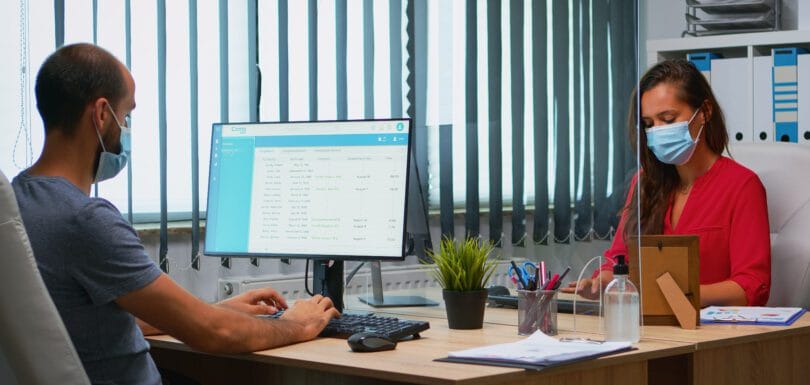The Remarkable Evolution of Remote Healthcare Staffing Now
The Evolution of Remote Healthcare Staffing Over the Last Decade Ten years ago, small clinics often struggled to keep up with patient calls, appointment scheduling, and billing all while managing growing patient loads. Staff burnout was common, and many offices found themselves juggling too many tasks with too few hands. Over the last decade, Remote Healthcare Staffing has become a game-changer, offering a smarter way to handle administrative responsibilities without compromising patient care. In essence, remote healthcare staffing refers to hiring trained professionals who work offsite to handle essential tasks, from managing medical records to coordinating patient care. Today, services like Virtual Front Desk Experts, Remote Appointment Schedulers, and Virtual Medical Billing Experts help practices run smoothly while ensuring patients receive timely, attentive service. Today, its evolution matters more than ever because the healthcare landscape is growing rapidly, and clinics cannot always afford large on-site teams. By bringing in skilled healthcare virtual assistants, Virtual EMR/EHR Specialists, and Telehealth Virtual Assistants, practices can streamline operations, reduce stress on in-house staff, and create a better experience for patients. The rise of remote medical teams over the past decade shows how technology, trust, and strategy combine to reshape the way clinics function, making patient care more efficient and compassionate. The Early Days of Remote Healthcare Staffing In the beginning, remote staffing was a novel concept. Clinics mainly relied on in-person administrative teams, and hiring someone offsite seemed risky. Initially, remote staff handled basic tasks such as appointment reminders, simple billing, or entering patient information. Most offices were hesitant because technology for secure patient data management was limited. During this period, many doctors and practice managers doubted the reliability of virtual support. Could a virtual medical assistant really handle sensitive information or respond quickly to urgent calls? Could a virtual assistant for medical offices match the efficiency of someone sitting right there at the front desk? These concerns slowed adoption. Despite challenges, early adopters discovered small wins. For instance, clinics that experimented with remote staff found that scheduling errors decreased and phone wait times shortened. Even with limited technology, practices that tried remote assistants saw the potential for a more flexible workforce. Slowly, trust began to grow, and so did the understanding that virtual staffing could do more than just simple tasks it could transform the way clinics operate entirely. Technological Advancements Driving Change Technology quickly became the driving force behind virtual staffing. Electronic Medical Records (EMRs) simplified access to patient histories, making it possible for virtual staff to update records accurately from anywhere. Telehealth platforms allowed remote professionals to schedule virtual consultations, confirm appointments, and even guide patients through initial screenings. Several key technologies have made remote healthcare staffing more efficient and reliable. Electronic Medical Records (EMRs): Easy access to patient histories and accurate record updates from anywhere Telehealth platforms: Enable virtual consultations, appointment scheduling, and initial patient screenings AI-powered tools: Automate reminders, follow-ups, and claim submissions to reduce repetitive tasks Secure cloud storage & HIPAA-compliant software: Protect sensitive patient data and build trust with clinics Integrated workflow systems: Coordinate between virtual assistants and on-site staff for seamless operations AI tools also played a big role, automating repetitive tasks such as reminders, follow-ups, and claim submissions. As a result, a single virtual medical office assistant could manage multiple aspects of clinic operations, freeing in-house staff to focus on patient care. Additionally, secure cloud storage and HIPAA-compliant software addressed earlier concerns about confidentiality. Clinics began to trust that remote professionals could handle sensitive data safely. With these tools, virtual assistants were no longer just supporting roles they became integral to operations. For example, a virtual assistant could review patient forms, flag missing information, and coordinate with the on-site team before appointments, ensuring a smooth workflow. This technological shift didn’t just improve efficiency it reshaped the expectations of what remote staff could do. Offices realized that investing in the right software and virtual expertise allowed them to grow without expanding physical space. The era of technology-driven virtual staffing had arrived, setting the stage for widespread adoption. Benefits of Virtual Staffing Today Today, remote medical support brings both practical and emotional benefits. Clinics enjoy several advantages, such as: Reduced overhead costs and operational expenses Flexible staffing for peak hours or busy days Faster patient communication and appointment scheduling Improved patient satisfaction and engagement Reduced burnout for on-site staff Virtual assistants manage tasks like appointment scheduling, patient reminders, billing follow-ups, and even minor administrative decision-making, making daily operations smoother for everyone involved. Flexibility is another big advantage. Offices can adjust staffing levels based on peak hours or patient volume without overworking on-site staff. Patients also notice the difference. Waiting on hold for long periods is becoming rare, as skilled virtual assistants manage calls and online scheduling efficiently. As one office manager explained Patients are happier, and our team feels less stressed it’s a win-win. Moreover, the emotional impact is significant. A warm and responsive virtual presence helps patients feel cared for, even if no one is physically at the front desk. Modern clinics now use healthcare digital assistants and virtual health assistants to ensure communication is fast, accurate and personalized. For example, a virtual assistant might follow up with a patient after surgery to answer questions or confirm medication schedules, which builds trust and improves adherence to care plans. With benefits spanning cost savings, operational efficiency, and patient satisfaction, remote medical support has become an indispensable part of modern medical practice. Challenges and Solutions in the Last Decade Despite its many benefits virtual staffing faced challenges over the last ten years. One of the biggest was HIPAA compliance and secure handling of patient data. Early virtual assistants often lacked training in medical protocols, and clinics worried about potential errors. Resistance from traditional staff was another hurdle. Some in-house employees feared losing jobs or doubted the ability of virtual professionals to perform adequately. However, solutions emerged. Clinics implemented HIPAA-compliant platforms with secure access and encrypted communication, ensuring sensitive information remained protected. Standardized training programs helped remote assistants












